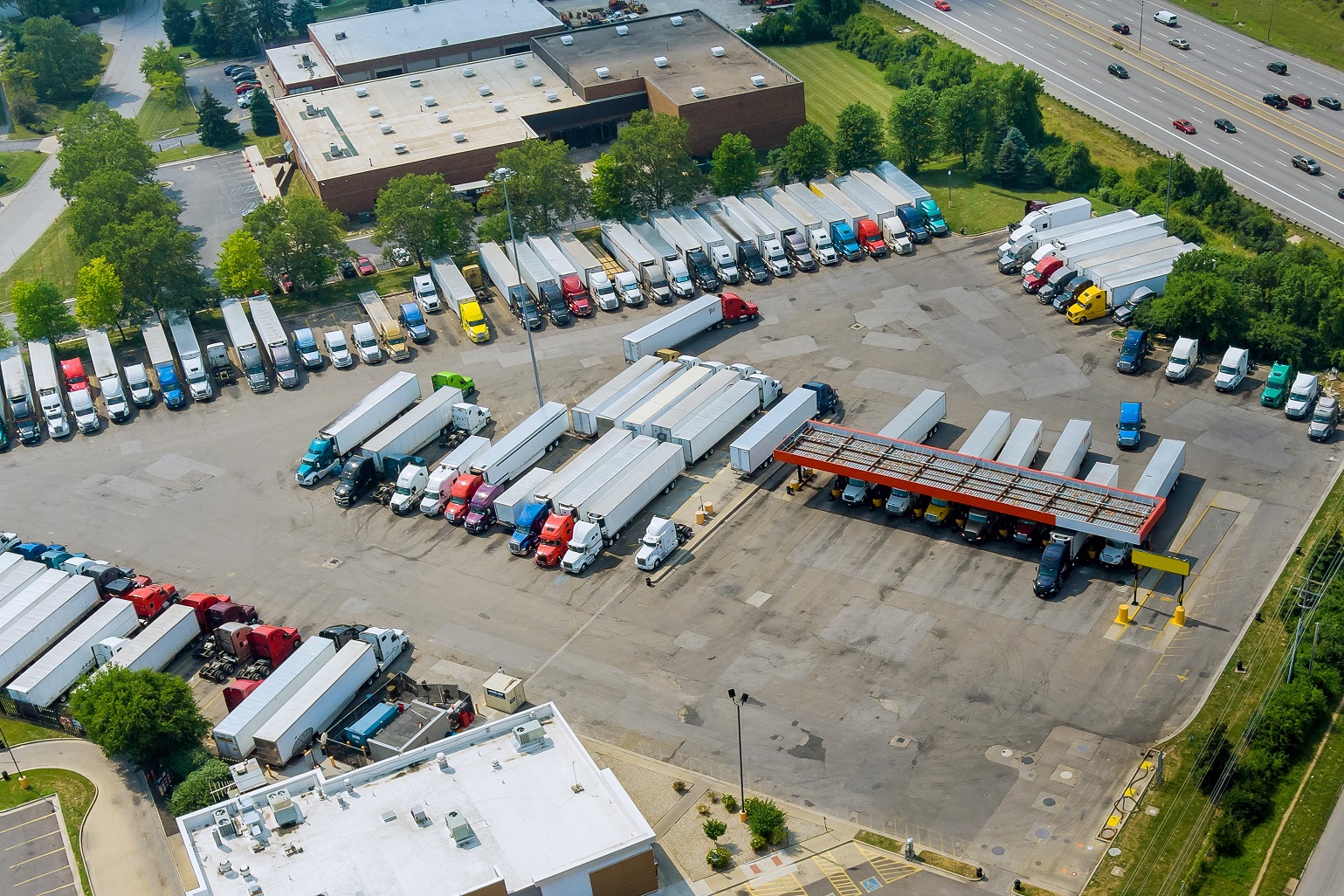A nationwide shortage of effective truck parking options harms overall mobility. With Jason’s Law and transportation analytics, the U.S. government is hoping to shine a spotlight on this issue and improve parking accessibility for all commercial drivers.
Providing commercial vehicle drivers with safe public parking options to get adequate rest is imperative for smoother supply chain movement, reduced collision rates and better quality of life. As regions have become more populated, there’s been a subsequent increase in the number of commercial vehicles on the road. S&P Global Mobility reported that the U.S. commercial vehicle market expanded by 14% in 2023, However, despite this growth, the number of places for drivers to park commercial vehicles hasn’t kept up. According to a 2020 count by the Federal Highway Administration (FHWA), only 313,000 designated truck parking spots were recorded. This number must increase in order to better accommodate the nearly 32 million commercial vehicles and counting that currently drive on North American roads.
At face value, the truck parking deficiency may simply seem like an inconvenience for commercial drivers to deal with, but there are larger problems at play. A lack of safe places to rest for commercial operators can endanger them, result in regulatory fines and even delay deliveries. The U.S. government is aware of these issues and addressing the truck parking gap by deploying a two-pronged approach. They’ve ratified legislation and also rolled out separate programs that sponsor new technologies, supporting eligible organizations in the development of smarter transportation infrastructure. By enacting laws and helping state agencies procure the right solutions, the federal government is doing its part to enhance commercial vehicle parking availability.
Jason’s Law: Driving awareness and handling the North American truck parking problem
Due to how much space semi trucks and freight vehicles take up, there are limitations on where they’re able to park. As a result, these vehicles require specialized parking solutions. Drivers are often given few parking spots to choose from and may experience challenges maneuvering their vehicles within cramped parking lots. Remaining spots that are available might also be located in unsafe areas.
Jason’s Law was passed to help prioritize the expansion of safe, amenity-filled parking and rest areas for commercial drivers. This legislation mandates that a regular survey be conducted to assess current national truck parking availability and its effectiveness. If shortages are observed, states must develop action plans to add more options. However, neglecting data when forming a solid truck parking action plan can undermine its effectiveness, as simply building new parking and rest areas at random won’t result in the project’s potential being maximized.
Assembling a data-driven truck parking action plan
When public truck stops aren’t available, private stops can fill some of the void, but carriers aren’t always willing to pay for these for their drivers. As a result, commercial drivers may be forced to park in unsafe or even illegal areas in order to get adequate rest and comply with Hours of Service (HOS) regulations. Transportation planners realize the severity of this issue and are working to address it by building more parking infrastructure. However, they’re also aware that this task isn’t simply about adding more options at random. Using transportation data to choose the right locations matters just as much.
Key insights around stop analytics, traffic totals and available space are all able to help planners pinpoint areas with the greatest need for more truck parking options. Based on a region’s last-mile delivery trends, departments can differentiate between whether a short-term or long-haul parking project is better suited for a specific location. In downtown areas where curbside space is a luxury, understanding how truck deliveries affect city traffic can also help planners diagnose the existence of a problem. If it’s observed that truck deliveries are routinely stalling traffic, a surplus of regular parking spaces may need to be converted to commercial ones to increase safety and efficiency.
Benefits of using technology for truck parking site selection
By using technology to conduct effective truck parking site selection, smarter, more resilient cities are constructed that account for the needs of all vehicles on the road. Better city and highway planning leads to improved quality of life for both commercial drivers and citizens, with reduced traffic, less stress around vehicle parking and increased safety being realized. Transportation technologies help to make the unknowns of truck movement known, giving organizations insights to maximize available space and understand the context behind vehicles’ tendencies.
Building smartly located truck parking additionally prevents commercial drivers from falling out of HOS compliance. If a commercial driver is nearing the end of their hours limit for the day, but they can’t find a suitable place to park their vehicle, they might spend more time than they can afford in search of a spot. Transportation management solutions can assist planners in identifying the most common areas this problem is likely to occur based on both annual average daily traffic (AADT) counts and stoppage data. Planners are then able to strategically place new truck parking in areas where the data shows heavy commercial movement or frequent truck stops are occurring.
A visualization from our Interactive Map of freight parking options in the greater Jacksonville, Florida region.

This heatmap of Florida from our Interactive Map tool shows stop counts for class 6-8 trucks in 2022.
Discover more: See our Interactive Map for more visualizations of how our transportation management solution can support your planning or policymaking initiatives.
Geotab ITS’ commitment to a safer, more efficient future in transportation parking solutions
Commercial vehicles are the lifeblood of the North American economy and supply chain. Geotab ITS believes that those who work tirelessly to move our people, food and necessities deserve dignity and the ability to safely rest their heads at night while traveling. We work closely with consultancies, businesses and government entities to make this happen by supporting their new truck parking initiatives with our richly contextualized transportation insights. Our core pillars reflect the Geotab ITS mission to do more for commercial drivers and enrich quality of life for all. They are:
- Resilient Infrastructure – Is located at the right place and time for the benefit of everyone.
- Enhance Safety – Because every road fatality is a family member lost.
- Traffic Management – Efficient roads lead to economic prosperity and an improved quality of life.
- Data Harmonization – The impact of combining compatible data increases exponentially.
- Sustainability & Equity – Better investments stand the test of time, accessible to more.
We’re doing our part by equipping organizations with the data they need to build safer, smarter and more abundant truck parking options. Jason’s Law refocused the national conversation around truck parking; now, agencies are building more rest areas using data like ours to drive flourishing outcomes.
The Geotab ITS mission: Thriving transportation networks backed by mobility insights
In addition to supporting better truck parking, Geotab ITS’ vision for the future is to promote greater economic outcomes, freedom of mobility, safety and sustainability for all who drive on North American roads. Our mobility insights power the intelligence behind many agencies’ new infrastructure and policy initiatives, with that number only continuing to grow. We draw data from nearly four million vehicles to contextualize commercial vehicles’ reasons for travel, helping organizations execute on their truck parking initiatives and build more efficient infrastructure as a result.
Learn more about Geotab ITS’ applications for improved truck parking and optimal site selection by speaking to one of our solutions experts today.




